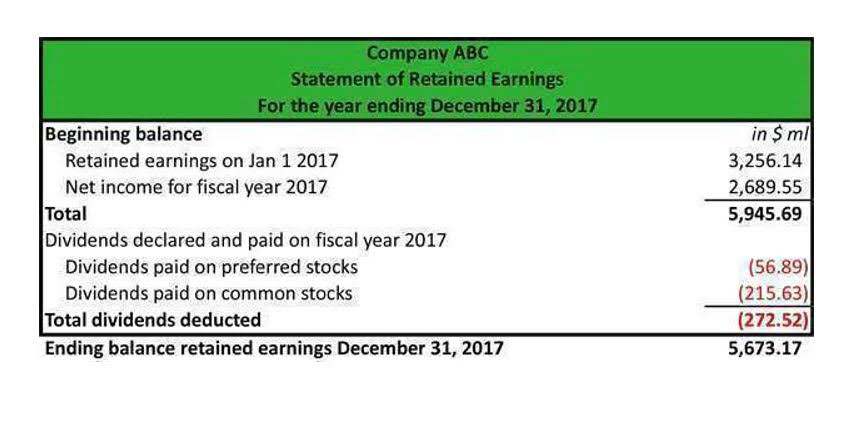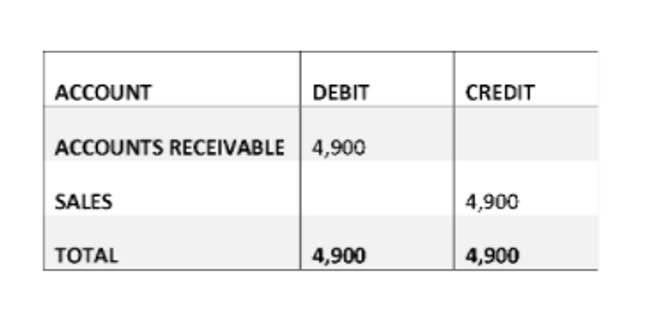Variable Cost: Definition, Types, Formulas, Calculations & Example
For example, if a company can keep its variable costs low while maintaining high production levels, its profit margins will grow. While the fixed cost remains the same, the variable cost increases with the volume of production. Analyzing the Variable Cost can help the company find ways to reduce it.
How To Check Website Traffic in 2025? Essential Tips And Tools
- Setting clear spending limits helps ensure that your income covers your needs while allowing room for flexibility in variable expenses.
- There is a linear relationship between variable expenses and production.
- The resulting value reveals the total variable costs incurred during a specific production or sales period.
- Setting the right prices for products or services is crucial for any enterprise.
- As the volume of production and output increases, variable costs will also increase.
- This knowledge serves as a foundation for crafting competitive and profitable pricing strategies.
By streamlining production methods and eliminating wasteful practices, they consistently lower their variable costs. Understanding these distinctions enables business owners learn about real estate bookkeeping best practice to make better financial decisions and optimize cost management strategies for enhanced profitability. Used for evaluating cost efficiency, comparing production processes, and determining optimal production levels to minimize per-unit costs. Focuses on the total expense incurred with changes in production levels. Of course, you don’t want to charge too much and risk losing business to better-priced competition. Using the variable cost formula will help you find the sweet spot between charging too much and too little, ensuring profitability for your business.
What is Variable Overhead?
Variable costs are directly related to the cost of production of goods or services, while fixed costs do not vary with the level of production. Variable costs are commonly designated as COGS, whereas fixed costs are not usually included in COGS. Fluctuations in sales and production levels can affect variable costs if factors such as sales commissions are included in per-unit production costs. Meanwhile, fixed costs must still be paid even if production slows down significantly. Total costs are composed of both total fixed costs and total variable costs. Total fixed costs are the sum of all consistent, non-variable expenses a company must pay.
Additionally, credit card fees and sales commissions are common examples of variable costs that a small business incurs. Effective management of variable costs directly impacts a business's profit margin and overall profitability. Understanding variable costs is crucial for determining the right pricing strategy and boosting profit margins. Variable costs play a significant role in calculating the total cost of production and influence pricing strategies based on the number of sales and total output. Small businesses can leverage the knowledge of average variable costs to make informed decisions and increase profitability.
Examples of Variable Costs
In the manufacturing industry, variable costs, such as direct labour and raw materials, fluctuate with the production level and are impacted by changes in raw material prices. With production increases, the total variable cost of production also increases, affecting the company's profitability. Managing variable costs is vital for maintaining a healthy profit margin and optimising profitability. Total fixed costs remain constant regardless of production or sales volume, while variable costs fluctuate based on how to calculate your min max inventory levels output levels.
Definition of Fixed Expenses
Reduction in the Variable Cost translates into lower variable expenses and production costs. In the manufacturing industry, variable costs are a significant portion of total production costs. Efficient management of these costs is crucial for maintaining competitive pricing and profit margins. To calculate variable costs, start by listing all costs that fluctuate with production volume.
Technology Solutions for Variable Cost Management
For example, suppose a company leases office space for $10,000 per month, rents machinery for $5,000 per month, and has a $1,000 monthly utility bill. Characteristics of variable costs include their direct proportionality to production levels, their role in cost of goods sold (COGS), and their impact on a company's profitability. Understanding these characteristics is essential for effective cost management and pricing strategies.
Keep a close eye on fluctuations in production levels and sales volumes, as these directly impact variable costs. Use data analytics tools to identify patterns and trends, enabling you to make informed decisions on cost optimization. A thorough understanding of variable costs empowers businesses to take charge of their expenditures. Organizations can strategically manage resources and optimize production levels by recognizing which expenses vary with production. Therefore, the variable costs incurred by the company for producing 5,000 toy cars amount to Rs. 250,000 during that particular month.
Fixed costs are often seen as unavoidable—employee salaries, electricity, rent, and office expenses. Variable expenses, on the other hand, are often seen as discretionary. Maintenance costs are a good example; maintenance is essential but can be delayed if there's a cash crunch. For example, Amy is quite concerned about her bakery as the revenue generated from sales are below the total costs of running the bakery. Amy asks for your opinion on whether she should close down the business or not. Additionally, she’s already committed to paying for one year of rent, electricity, and employee salaries.
This includes materials, labor, and any other expenses directly tied to production. Next, quantify these costs for a specific period or production volume. For example, if a manufacturing plant hires workers to assemble products, the cost of their labor top 5 benefits of erp systems and3 criteria to consider upon implementation increases with the number of units produced.
Effect on Profit Margins
Variable costs are the sum of all labor and materials needed to produce units for sale or run your business. Because variable costs scale alongside, every unit of output will theoretically have the same amount of variable costs. Therefore, total variable costs can be calculated by multiplying the total quantity of output by the unit variable cost. Variable costs are a direct input in the calculation of contribution margin, the amount of proceeds a company collects after using sale proceeds to cover variable costs. Every dollar of contribution margin goes directly to paying for fixed costs; once all fixed costs have been paid for, every dollar of contribution margin contributes to profit. These costs fluctuate based on usage, lifestyle choices, and unexpected needs.
- Once your fixed expenses are covered, you can plan for variable expenses, savings, and discretionary spending.
- Here, internal and external factors refer to components like production scale, workforce, socio-political environment, etc.
- These costs directly impact the company's profitability, making it crucial to identify and manage them effectively.
- For example, rent that a widget company pays for a building will be the same regardless of the number of widgets produced within that building.
- Therefore, leverage rewards the company for not choosing variable costs as long as the company can produce enough output.
- In the intricate realm of business operations, understanding the concept of Variable Cost is paramount to achieving sustainable success.
Direct Labor
These tools often provide collaborative features for cost analysis and budgeting, enhancing overall cost management efficiency. Cost-volume-profit (CVP) analysis is a powerful tool for understanding the relationship between variable costs, sales volume, and profit. This analysis helps businesses determine the sales volume needed to cover all costs and achieve desired profit levels. For example, a bakery producing custom cakes must consider the cost of ingredients, labor, and utilities (all variable costs) when pricing each cake. If these costs increase but the bakery fails to adjust its pricing accordingly, profit margins will shrink. In manufacturing or energy-intensive businesses, utilities such as electricity, water, or fuel are variable costs that change with production volume.
MageComp offers excellent Digital marketing Services for maximum visibility, increased traffic, and measurable results for businesses. MageComp is a one-stop shop for eCommerce development services, where we develop scalable and feature-rich online stores. With a customer-centric approach and deep-rooted commitment to innovation, MageComp has managed to sustain its business in the cutthroat digital world. AI-powered systems will enable companies to analyze vast amounts of data and identify cost-saving opportunities with unprecedented precision.
How Do You Calculate Shareholders' Equity?
Additionally, buybacks can signal to the market that the company believes its shares are undervalued, which can further boost investor confidence and stock prices. Looking at the same period one year earlier, we can see that the year-on-year change in equity was a decrease of $25.15 billion. The balance sheet shows this decrease is due to both a reduction in assets and an increase in total liabilities. If a balance sheet is not available, another option is to summarize the total amount of all assets and subtract the total amount of all liabilities. When a company sells shares, the money it receives from investors, minus the par value, is credited to an account named capital in excess of par value (or "additional paid-in capital").
Investor’s Equation
For this reason, many investors view companies with negative shareholder equity as risky or unsafe investments. Shareholder equity alone is not a definitive indicator of a company's financial health. The debt-to-equity ratio, or D/E ratio, is determined by dividing the total liabilities of the business by the equity held by shareholders.
What is the main purpose of the stockholders’ equity statement?
- While equity ownership offers potential for gains, it also comes with financial risks, limited control, and exposure to market forces that can negatively impact shareholders.
- Stock buybacks, also known as share repurchases, involve a company purchasing its own outstanding shares from the market.
- Stockholders' equity is the remaining assets available to shareholders after all liabilities are paid.
- The phrase "number of shares issued" refers to the total number of shares that the corporation has issued which may or may not be owned by outside investors.
- SE provides a full snapshot of a company's financial health and performance, and it indicates the company’s financial stability.
- If this figure is negative, it may indicate an oncoming bankruptcy for that business, particularly if there exists a large debt liability as well.
In short, there are several ways to calculate stockholders' equity (all of which yield the same result), but the outcome may not be of particular value to the shareholder. Excluding these transactions, the major source of change in a company's equity is retained earnings, which are a component of comprehensive income. Examining the return on equity of a company over several years shows the trend in earnings growth of a company.
Balance sheet assumptions
A higher SE ratio indicates that a greater portion of the company's assets are financed by equity, suggesting lower financial risk and potentially greater financial stability. The SE ratio measures the proportion of a company's total assets financed by SE (rather than debt). This helps stakeholders understand how profits are retained, dividends are distributed, and equity capital is managed, thereby facilitating informed investment and management decisions.
Common stockholders have a claim on the company's profits through dividends, although these are not guaranteed and are paid at the discretion of the board of directors. SE provides a full snapshot of a company's financial health and performance, and it indicates the company’s financial stability. As such, many investors view companies with negative equity as risky or unsafe. However, many individuals use it in conjunction with other financial metrics to gauge the soundness of a company.
Your LTV will change over time as you make more mortgage payments toward the home. Essentially, this is the amount of home that you’ve paid off toward your mortgage. In this Redfin article, we’ll outline all the calculations you need to know, how you can tap into your home equity, and what to know if you’re selling your home. Whether you own a home in Sacramento, CA, or a condo in Baltimore, MD, here’s how to calculate home equity. Here’s how investors and analysts use Return on Equity in their financial evaluations.
Therefore, the stockholder's equity of Apple Inc. has declined from $134,047 Mn as at September 30, 2017 to $107,147 Mn as at September 29, 2018. Therefore, the stockholder's equity of SDF Ltd as on March 31, 20XX stood at $800,000. Therefore, the stockholder's equity of PRQ Ltd as on March 31, 20XX stood at $140,000. David is comprehensively experienced in many facets of financial door hangers are and legal research and publishing. As an Investopedia fact checker since 2020, he has validated over 1,100 articles on a wide range of financial and investment topics.
- Shareholders' equity represents the net worth of a company—the dollar amount that would be returned to shareholders if a company's total assets were liquidated and all its debts were repaid.
- Long-term liabilities are obligations that are due for repayment in periods longer than one year, such as bonds payable, leases, and pension obligations.
- To calculate retained earnings, subtract expenses from revenues for a given period, factoring in adjustments like stock dividends and changes in accounting policies.
- Therefore, the stockholder's equity of SDF Ltd as on March 31, 20XX stood at $800,000.
- Shareholder equity is also known as the book value of the company and is derived from two main sources, the money invested in the business and the retained earnings.
It shows how much money or value a business has made by selling common shares to equity investors. The concept of shareholders' equity arises from the need to account for the ownership interest in a corporation. It reflects the capital that the owners have invested into the company either through direct investments or through the retention of earnings over time. Over the years, shareholders' equity has become a fundamental component of a company's balance sheet, offering insight into its financial well-being. The market value approach relies on the current market price of shares, which reflects the company's true value in the eyes of investors. To use this method, subtract total liabilities from the market capitalization obtained by multiplying the number of shares by the current share price.
Shareholder equity ratios
In order to assess total solvency, loan holders are therefore not overly concerned with the value of equity beyond the basic level of equity. But because stockholders' equity may only be paid out after bondholders' equity has been paid out, shareholders are worried about both liabilities and equity accounts. Ever wondered how much cash you as a shareholder would get if a firm was dissolved, all of its assets were sold, and all debts were settled? Now let's talk about shareholders equity, often known as shareholder's capital or net assets.
What is the relation between shareholders’ equity and dividends?
Shareholder equity (SE), also known as shareholders’ equity, stockholders' equity, or owners' equity, represents the residual value of a company's assets after subtracting all its liabilities. Essentially, it shows the net worth of a company from the shareholders' perspective. Stockholders’ equity represents the owners' residual interest in a company's assets after liabilities are deducted. It reflects the net worth of a business source documents and is reported on the balance sheet under the equity section.
Current and long-term assets are two main categories on a company's balance sheet. A company's negative equity that remains prolonged can amount to balance sheet insolvency. Treasury stock is not an asset, it's a contra-stockholders' equity account, that is to say it is deducted from stockholders' equity.
Current liabilities are debts that are due for repayment within one year, such as accounts payable and tax obligations. Long-term liabilities are those that are due for repayment in periods beyond one year; they include bonds payable, leases, and pension obligations. Since equity accounts for total assets and total liabilities, cash and cash equivalents would only represent a small piece of a company's financial picture. Current liabilities are debts typically due for repayment within one year, including accounts payable and taxes payable. Long-term liabilities are obligations that are due for repayment in periods longer than one year, such as bonds payable, leases, and pension obligations.
Note that stock dividends, however, don't change the total shareholders’ equity; they just move value from retained earnings to paid-in capital within the equity section of the balance sheet. Stockholders’ equity plays a crucial role in evaluating a company’s financial health and performance. It serves as a buffer against losses and liabilities, indicating whether the company has sufficient funds to settle its obligations.
Buying Your First Home in Denver, CO? Here’s How Much Money You Need to Make
The calculation includes information from the company's balance sheet; it can be difficult to pinpoint the accuracy of depreciation and compound interest calculator other factors. In addition, a company's assets and liabilities can change at any time because of unforeseen circumstances. ROE tells you how effectively a company is using shareholders’ equity to generate profits. Total equity (book value) might be equivalent to total shareholder equity on a company's balance sheet if you look at it from the standpoint of book value.
CPA Firm Denver CO Accountant Aurora

Get accurate financials, responsive support, and expert bookkeeping advice for your real estate business. Your dedicated team of professional bookkeepers will handle everything from accounts payable to reconciliations, and monthly reporting. RedGate Accounting & Bookkeeping caters to clients in the Denver area.

Molly Rice – Owner, Small Business Accountant in Denver
- The company serves individuals and businesses, providing a range of services, such as bookkeeping, accounting, tax planning, and payroll.
- At Ginger Bookkeeping, we're passionate about accounting services for small business owners.
- Profit & Loss Statements, Balance Sheets, Cash Flow Statements and whatever specific reports you need to have tailored to your unique business, let us take care of your firm’s reporting needs.
- Learn how to build, read, and use financial statements for your business so you can make more informed decisions.
- With organized financial practices and relevant, sophisticated reporting, our bookkeepers can help you create a strong foundation for your business decisions.
- Barta Business Group regularly serves a range of different companies in industries including construction, technology, and security.
- Your personalized team of bookkeepers and tax analysts will calculate your business EBITDA, net profit, gross margin, job costing, ROI, and profit and loss.
In addition to tracking credits and debits and reconciling accounts, American Bookkeeping Services provides financial statements and special reports to help clients make well-informed decisions. As your trusted advisor, we’ll provide the tools to control costs and maintain healthy cash flow so your business is lean and profitable. This includes cloud accounting services, bookkeeping, user-friendly financial statements, and a powerful strategy to reduce taxes so more revenue makes it to your bottom line. When you run into questions or have to make an important business decision, we'll always make time to offer sound advice.
A customized chart of accounts tells the financial story of your business.

The Bottom Line Bookkeeping provides outsourced accounting and financial services to clients throughout the Denver area. The firm offers customized bookkeeping solutions according to the customer's business structure and financial objectives. Its services include CFO Services, budgets, cash flow balance sheet projections, bank reconciliation, and payroll.

Professional Bookkeeping & Tax Assistants
- Their clientele includes Transportation, Retail, Private Aviation, and public relations companies.
- The accountants at Accounting & Tax Solutions, Inc. are members of the American Institute of Certified Public Accountants (AICPA) and the Colorado Society of Certified Public Accountants (COCPA).
- You will save time to focus on all the other aspects of your business.
- We partner with merchants like Gusto, Stripe, Shopify, and Square—so your finances are always accurate.
- As your trusted advisor, we’ll provide the tools to control costs and maintain healthy cash flow so your business is lean and profitable.
- Our platform allows you to automate data inputs from most major providers to avoid common mistakes.
You run your business, grow it, take it as far as your dreams and the market will allow. Sign up for our newsletter and be the first to know about the latest tax news. We'll supply the business Grocery Store Accounting concepts and financial insights that will inspire you to reach farther and be more successful.
- Its team also helps create financial statements, conducts accounting processes, and prepares documents for sales, payroll, and business taxes.
- Dimov Tax Specialists is a full-service agency that provides bookkeeping solutions in Denver.
- RedGate Accounting & Bookkeeping caters to clients in the Denver area.
- We provide comprehensive online bookkeeping services that free up your time so you can focus on running your business.
- When you team up with us, we'll become a sounding board for your ideas and the resource that helps you stay on track to reach your business goals.

Denver’s best bookkeeping specialists ensure fast and easy setup, personalized reports, and white-glove service so your books are always accurate and current. Proactive tax planning to reduce liabilities and accurate tax preparation for businesses and individuals. We offer accounting and bookkeepers denver bookkeeping solutions specially designed to match the needs of small business owners.
